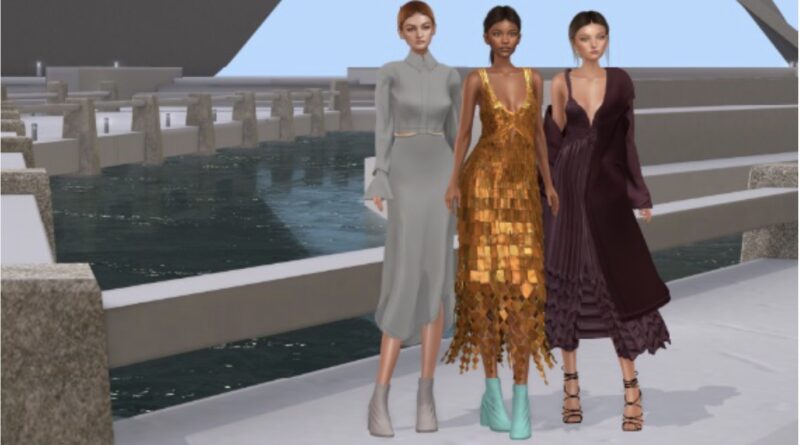Metaverse Fashion Week Innovates Style
In the midst of New York, Paris and Milan debuting 2022 fashion shows, a new innovation has debuted on the runway. In February a digital fashion show with unique ready-to-wear fall/winter 2022 designs took place live in Second Life, an online multimedia platform.
The event was a collaboration between Everyrealm, Inc., a New York City-based metaverse investor, innovator, and developer, Blueberry Entertainment, a digital wearables designer, and fashion designer Jonathan Simkhai.
The digital show, called Metaverse Fashion Week, occurred one day before Simkhai’s real-life New York Fashion Week presentation. The term “metaverse” refers to a virtual reality space where users can connect with one another.
“Creating a fashion show with the avatars of 10 models walking the runway invites more women and people identifying as women into a virtual space. In addition, the event helps virtual fashion cement its place in the industry,” Julia Schwartz, co founder of Everyrealm, Inc. said.
Schwartz said six of the wearables became available for sale as non-fungible tokens (NFTs) a few days after the virtual show in an online sale. Prices ranged between $250 and $650 USD, depending on the garment. Users were able to purchase the NFTs with Ethereum (ETH), a cryptocurrency. Sales took place on OpenSea, the largest NFT marketplace.
The four garments not sold as NFTs were sold as wearables in Second Life. These pieces were available the week after the fashion show. Users could purchase them with Linden dollars, the currency used in Second Life, which itself can be purchased with real U.S. dollars.
One outfit, a glittering gold dress, was sold as a unique one of one NFT in a timed auction. This item started at a bidding price of 1 ETH, equal to around $2,790 USD.
Schwartz said the digital fashion show was a way to educate audiences about the metaverse.
“This fashion show revealed how well the metaverse can capture certain aspects of real world items, such as details, movement, and color. Everything in this show had to be 3D modeled and rendered. On average, it takes about 16 human hours from start to finish to create a 3D garment. The team at Blueberry led by Mishi McDuff created all of the digital wearables,” said Schwartz.
Organizing the event required building a virtual venue. Other necessary tasks included creating a guest list, holding show run-throughs, engaging in real-life model fittings, and having the models walk a real runway so coders could recreate the event virtually.
“When we fit the models backstage and the designer, Jonathan Simkhai, moved a sleeve, that change had to be captured by the designers at Blueberry. That way, we showed the accurate version of the final design,” said Schwartz.
Some details of real life were not included in the metaverse. Collaborators decided not to have the virtual fashion show require audience members to be socially distanced.
“COVID doesn’t exist in the metaverse, so viewers could sit close together. In the real world, fashion shows and presentations had to take COVID into consideration and implement social distancing measures. Many designers opted for smaller audiences and presentations this year,” Schwartz said.
“One of the most interesting aspects of the digital fashion show was how it dropped everyone in the metaverse into one spot. In the real world, New York Fashion Week is designed for people on the inside of the industry. It’s a more serious event,” said Schwartz.
In Second Life, people from all backgrounds could attend the event, in any form they wanted.
“That brought smiles to people’s faces. This event became a space where imagination could run wild,” Schwartz said.





